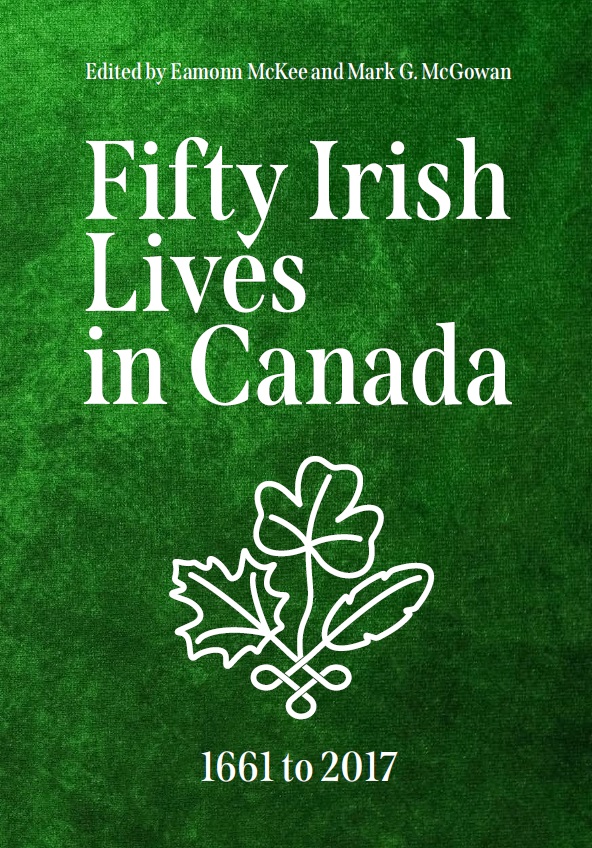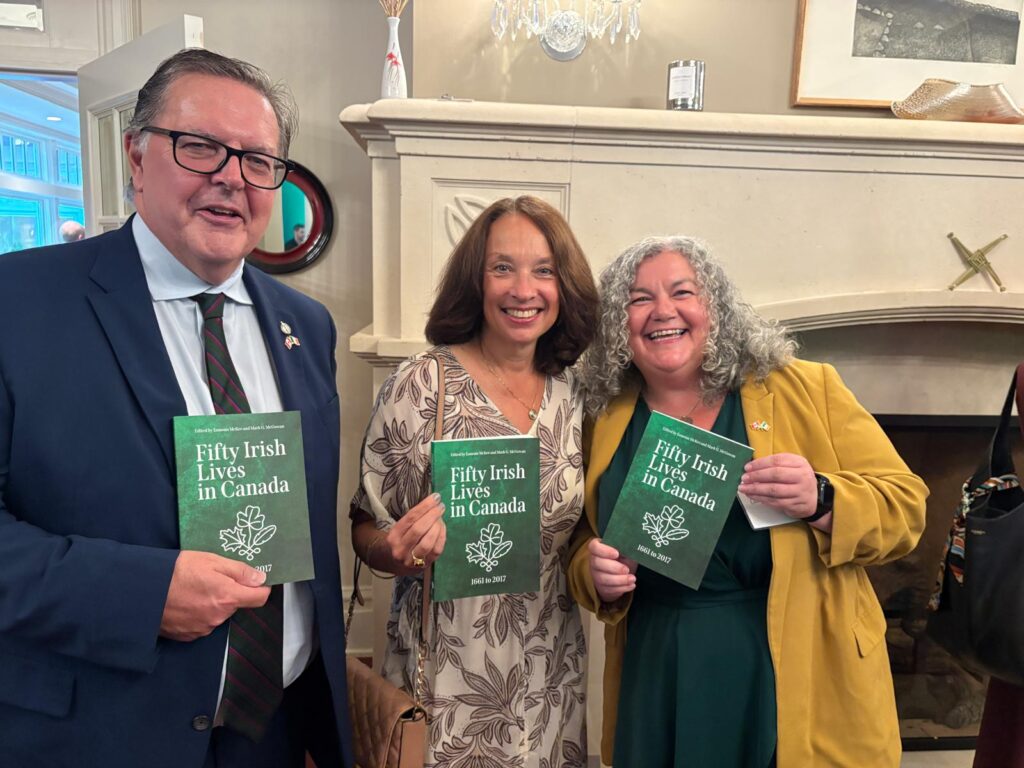
EDITOR Q&A: FIFTY IRISH LIVES IN CANADA, 1661 TO 2017

This fall, Novalis published Fifty Irish Lives in Canada, 1661 to 2017, edited by Eamonn McKee and Mark G. McGowan. This rich and inspiring collection by a range of highly respected authors offers a wonderful panorama of the story of the Irish in Canada, featuring politicians and clergy, merchants and business owners, religious women and entrepreneurs, teachers and writers, and many other memorable figures. I invited Mark McGowan to tell us about the book and what it says to people today.
How did this book come to be?
As he was discovering more about the Irish in his new ambassadorial post, Eamonn McKee floated the idea of a book about individual Irish contributions to Canada. I thought it was well overdue: not that the Irish had been missing from our published history, but there had never been a volume to focus on individual Irish persons and their work (for good or for ill) in Canada. This book would be akin to the Royal Irish Academy’s volume Irish Lives in America (USA).
How did you choose the people to include in the book and the writers to write about them?
We made the decision to limit the entries to those born in Ireland who sojourned or settled in Canada; otherwise, the volume could well be titled 500 Irish Lives in Canada! We wanted to strike a balance that was inclusive of region, gender, religion, class, and occupation, which was particularly difficult given the paucity of writing on individual Irish women, or labourers. We selected some of the finest scholars in Canada and Ireland, limiting them to 1,000 words or so for each profile plus suggestions for further reading, so as not to encumber the entries with footnotes.

(Photo by Mark McGowan)
What were a few highlights for you in the process of compiling these mini-biographies?
No doubt, the inclusion of so many women whom we discovered along the way, including Elizabeth Barnes (“The Witch of Plum Hollow”); Sarah “Mother McGinty” Ritchie, who slung both beer and her fists among Rideau Canal workers; and Eliza Grimason, who was a vocal advisor to John A. Macdonald. Two of my favourite biographies are that of Patrick Reid, who helped produce the design of the Canadian flag in 1965, and Daniel O’Donoghue, who was one of the fathers of the Canadian labour movement.
How do stories of Indigenous people feature in the book?
Several of the profiles look at engagement between Irish settlers and Indigenous peoples—for better or for worse. Bridget Moran and Paud Mulrooney were strongly allied to Indigenous rights, while Nicholas Flood Davin was one of the architects of Indian Residential Schools. The volume also gave us an opportunity to explore Irish-Indigenous relations in the thematic essay “Kindred Spirits,” which examined First Nations’ donations to Irish Famine relief in 1847. Until now, it was not well known that Haudenosaunee, Anishinaabeg, and Wendat peoples gave generously (nearly $20,000 in today’s currency) to help their starving “white brethren” in Ireland.
Why do we need to hear these stories today?
History is often written from the top down. What this book signals is that ordinary people matter and need to be written into our national narrative. For Irish people in Canada, expatriates and descendants, it’s an important reminder of the giants upon whose shoulders they stand. It is also a reminder to all settler Canadians of the way in which Indigenous peoples must be rewritten into our national and local histories: this book helps to widen the lens of our perspective. In these times when immigrants have been scapegoated for all of society’s ills, it is a reminder of the many significant contributions made by those who chose to make Canada their home.
Do you have any final thoughts to share about the book?
This book has been a labour of love and an effort to preserve the Irish Canadian story for future generations.
Anne Louise Mahoney is managing editor of Novalis. She is the editor of several books, including Pocket Book of Hope, and is the author of I Am and I Hope, part of the Seeds of Faith series for young children.


